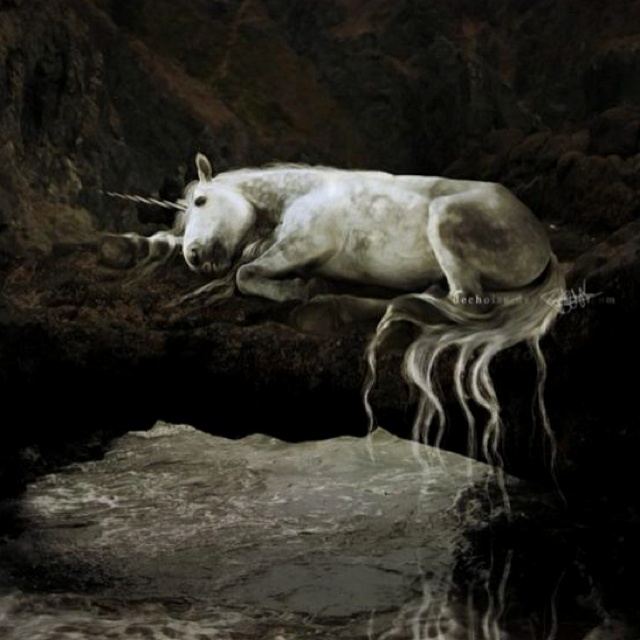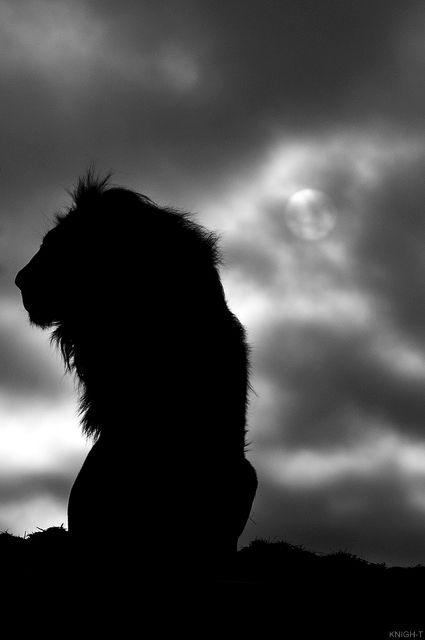The unicorn is a legendary creature that has been described since antiquity as a beast with a single large, pointed, spiralling horn projecting from its forehead.
“’This is a child!’ Haigha replied eagerly, coming in front of Alice to introduce her, and spreading out both his hands towards her in an Anglo-Saxon attitude. ‘We only found it to-day. It’s as large as life, and twice as natural!’
‘I always thought they were fabulous monsters!’ said the Unicorn. ‘Is it alive?’
‘It can talk,’ said Haigha solemnly.
The Unicorn looked dreamily at Alice, and said ‘Talk, child.’
Alice could not help her lips curling up into a smile as she began: ‘Do you know, I always thought Unicorns were fabulous monsters, too? I never saw one alive before!’
‘Well, now that we have seen each other,’ said the Unicorn, ‘if you’ll believe in me, I’ll believe in you. Is that a bargain?’
‘Yes, if you like,’ said Alice.”
Through the Looking-Glass
In European Literature and Art, the unicorn has been depicted for the last thousand years as a white horse- or goat-like animal with cloven hooves, and sometimes a goat’s beard and of course a long, straight horn with spiralling grooves. In the Middle Ages and the Renaissance, it was commonly described as an extremely wild woodland creature, a symbol of purity and grace, which could be captured only by a virgin. Its horn was described as having the power to render poisoned water drinkable and to heal sickness. Even in the Bible, the unicorn was mentioned a number of times, and because of its authority, people continued to defend the magical horse-like creature as real well into the Eighteenth century. However, the unicorn was never meant to appear in the Bible; it was just a mistranslation of one word or, more precisely, just a couple of letters, because of this the myth of the unicorn could survive for so long…

Long before Christianity
The myth of a single-horned beast, known as the unicorn, was born out of other legends and tales. Some of them suggest that this creature came from Tibet, others speak of India, and still others point to the Mountains of the Moon in Africa. Although we don’t know exactly its origin, the first dubious mention came from the Indus Valley Civilization, which, together with ancient Mesopotamia and Egypt, formed one of the three powerhouse civilizations of the ancient Near East (c. 3000 – 1300 BCE). Imagery on seals belonging to elite members of society depicts a horse-like animal (shown in profile) with a single horn protruding from its skull. Granted, this early link to unicorns is a tenuous one, and it’s much more likely that instead these are representations of Aurochs – a type of large wild cattle that formerly inhabited Europe, Asia, and North Africa. But the first written evidence we have for unicorns appears in ancient Greece. And interestingly enough, in the 13th century, Marco Polo described the unicorn as “they spend their time by preference wallowing in mud and slime” – hardly rainbows and sparkles, as we picture it today! By the Middle Ages, unicorns were more widely known throughout Europe and became a symbol of purity, power, and healing.

Magical Power of the horn
A unicorn horn itself, also known as an alicorn, was believed to have the power to render poisoned water drinkable and to heal sickness. There are many tales of people using powdered unicorn horn to create antidotes and cure deadly poisons or illnesses. For example, in the 16th century, Queen Elizabeth I of England was known to drink from a unicorn horn cup, thinking that if poison touched it, the cup would shatter or explode. While these beliefs seem fantastical today, they speak to the powerful legendary status of the unicorn horn as a protector and healer. For that, unicorns had to pay a very high price in the form of their lives. The traditional way to catch a unicorn was to set a trap for it using a female virgin. Once again, it was man that had to place himself at the top, dominating others as if it were his natural position, with an unbridled ego and the need to claim everything within his reach, as if being at the top of the food chain were his unquestionable right.
Hidden meaning
The unicorn inspired artists, its horn was coveted by kings, its killing was associated with prestige for many hunters, and for some, it was a great way to con people out of money by selling fakes, like whale horns instead of the unicorn’s. Furthermore, this fabled creature has even more hidden meanings to uncover.

Unlike a lion
The ‘higher’ and more mature form of the lion is the unicorn, which signifies the destination of the alchemical opus: the lapis philosophorum, or philosopher’s stone. A horse is a muscular and powerful animal. However, unlike a lion, a horse is tame. Thus, the unicorn is one’s hulking nature reigned in. The horn is phallic, representing the ferocious energy (even sexual energy) of men. Drinking from the unicorn’s horn bestows “strength, health, and life” (Jung, p. 469).
If we want to understand the hidden meaning of the unicorn, we have to take a look at the symbol of the lion. I will try to outline it very briefly; otherwise, this entry will be too long. For Jung, both animals illustrate “the wild, rampant, masculine, penetrating force of the spiritus mercurialis” (the world-creating spirit). Thus, the lion is your animal nature, particularly that part which is beastly, animalistic, or violent. An encounter with a lion, in art, fantasy, and alchemy symbolizes ferocious nature or one’s own ferocity. The lion and lion-like creatures can consume the ego, one great example of this is the Green Lion (but that’s a topic for another time…). Simply put, the wilderness, the powerful primal desire of impulses such as anger, hate, grief, hunger, etc. are all forces into which one may dissolve. The risk of encountering one’s own nature is that the enormity of feeling can overthrow your will and replace you as the “executive” of the human system. But when we overcome these desires, we can gain control over them, like the taming of a lion. Psychologically, this is when the lion has been brought under the voluntary control of the ego. In this way, the lion presides over all other animals as the “king of the jungle” and commands respect.
However, unlike the lion, the horse is tamed. In this way, the unicorn is a powerful nature in which it reigns. The unicorn is more spiritual. It is so powerful that even the best hunters needed to use a virgin as a lure because it could not be defeated with weapons or special skills.

Horny as…
“The horn is phallic, representing the ferocious energy (even sexual energy) of men. Drinking from the unicorn’s horn bestows “strength, health, and life” (Jung, p. 469).
To be honest, you don’t have to be a Freudian to see the phallic connotation of a horn placed in the lap of a beautiful virgin. So, I’m wondering where the word “horny” comes from…
Horned male animals such as bucks, bulls, and deer were seen as animals with enormous virility. But there is a difference between one horn and two. The sexuality of two horns leads to duality, but the single horn of the unicorn leads to unity. This is made explicit in its identification with Christ but also…
According to Jung, the virgin represents the Anima (one day I promise I’ll explain you more about ) or representing that which entices one to develop; she pulls you forward. Projected, she is one’s ideal lover. After all, women domesticate men,[1] or when great warriors softened in front of their chosen ones when they were touched by deeply human emotions and feelings that were often stronger than their warrior nature, such as Achilles.
The horn as an emblem of vigour and strength has a masculine character, but at the same time it is a cup, which, as a receptacle, is feminine” (p. 271)
The unicorn is a symbol and Hieros Gamos (sacred marriage): The masculine reconciled with the feminine. This reconciliation of opposites—male and female, high and low, rational and animal—is the philosopher’s stone; this process Jung calls “individuation.” However, the process of individuation is very long and involves many difficulties. It starts with facing the Lion, through the Sphinx and the Uroboros, to achieve something great like the unicorn.

Sources
St Neots Museum. (2021, April 8). Unicorns – a brief history. https://www.stneotsmuseum.org.uk/articles/unicorns-a-brief-history/
Davies, B. (2014, September 9). Homeage to the Unicorn. Symbolreader. https://symbolreader.net/2014/09/09/the-homage-to-the-unicorn/
Jackowski, J/ (n.d.). Archetypes: The Green Lion and the Unicorn. Feeding curiosity. https://feedingcuriosity.net/blog/archetypes-the-green-lion-and-the-unicorn

Leave a Reply